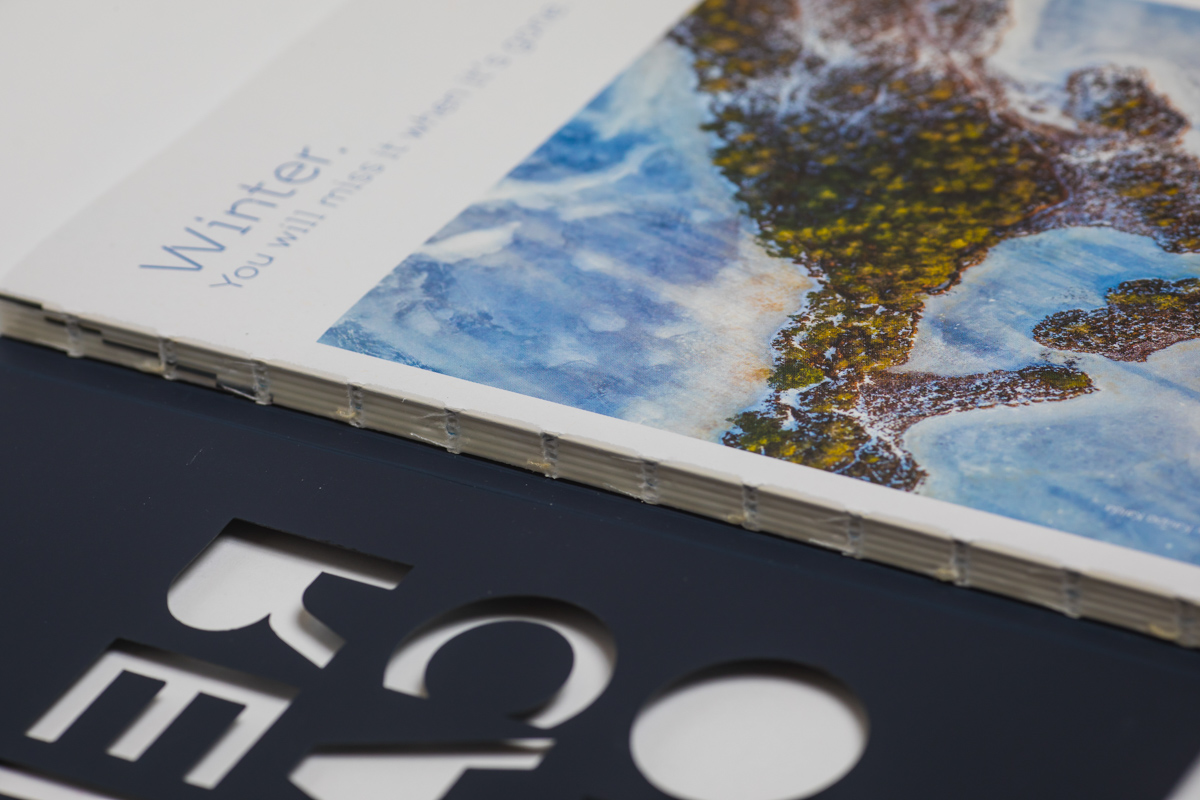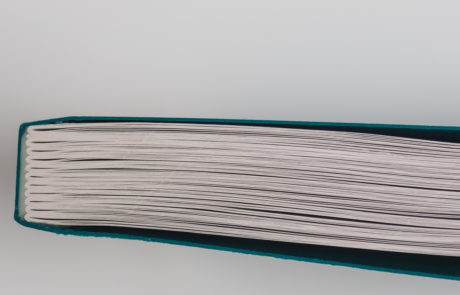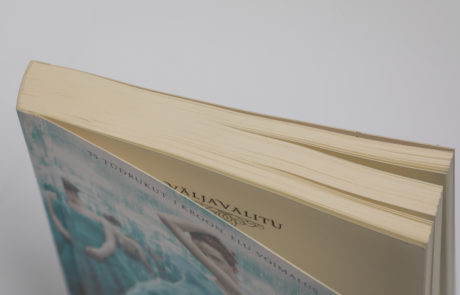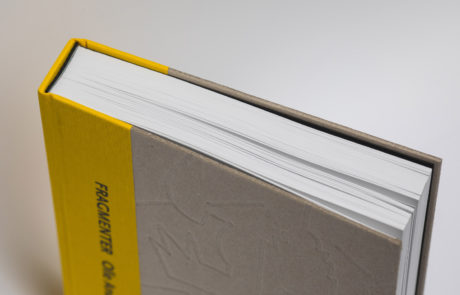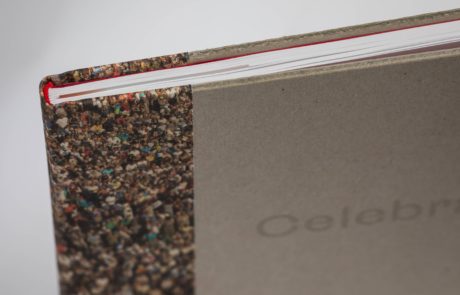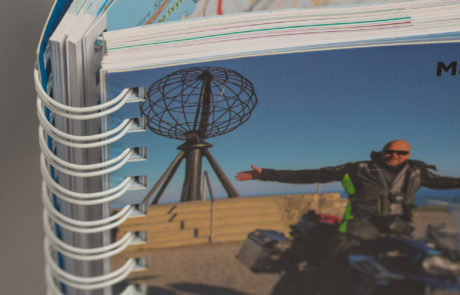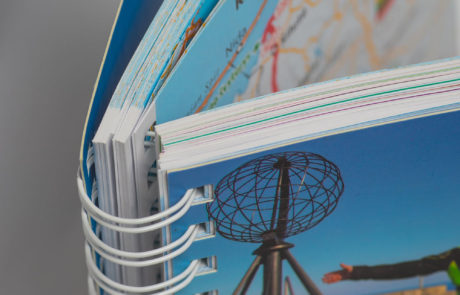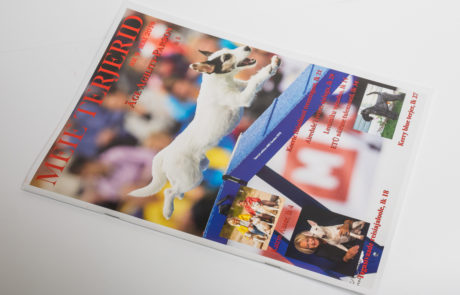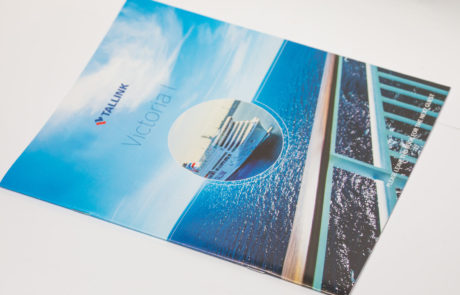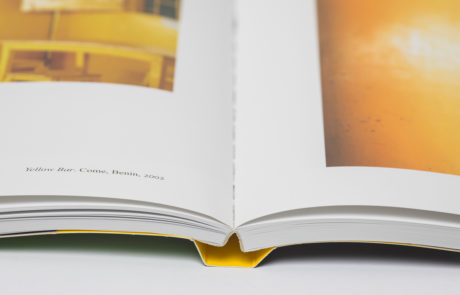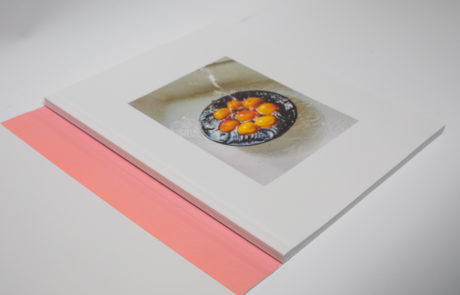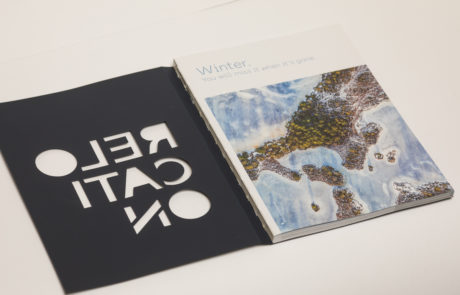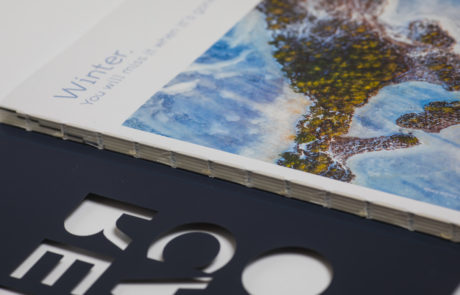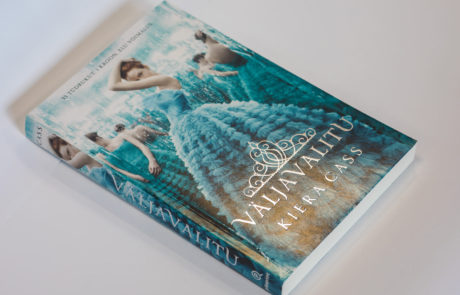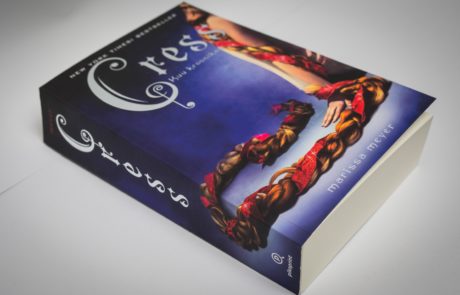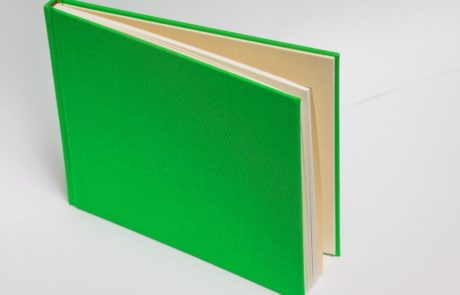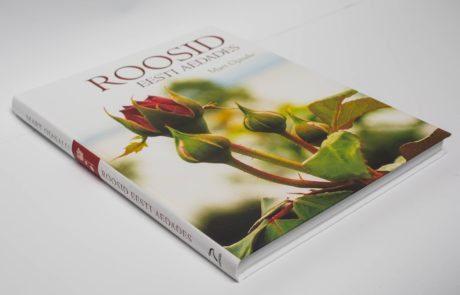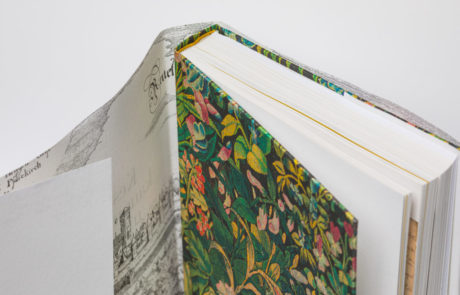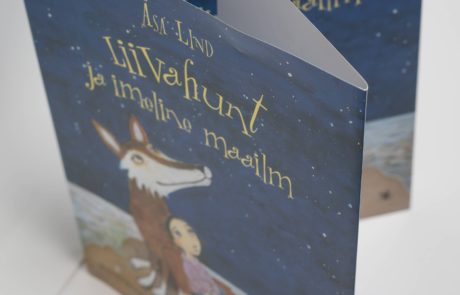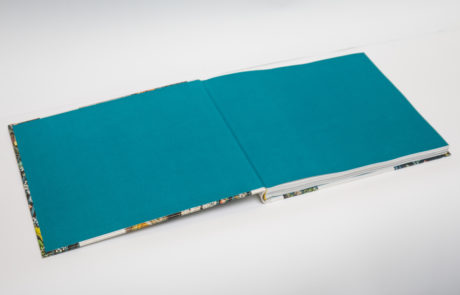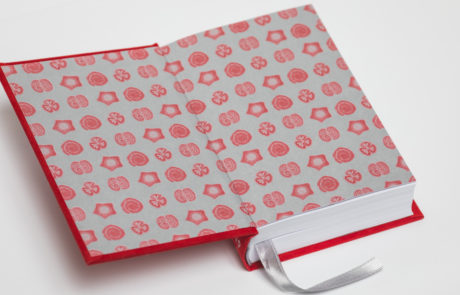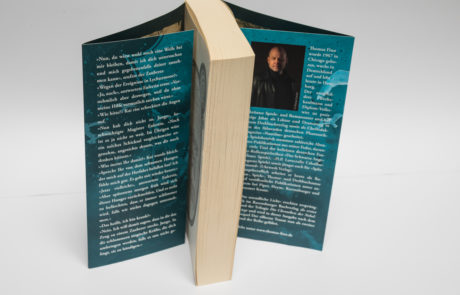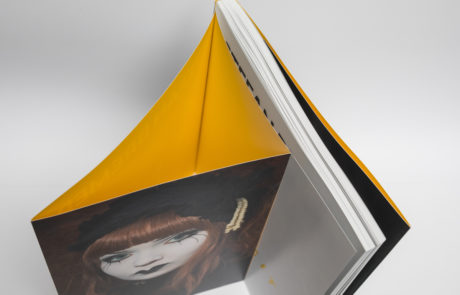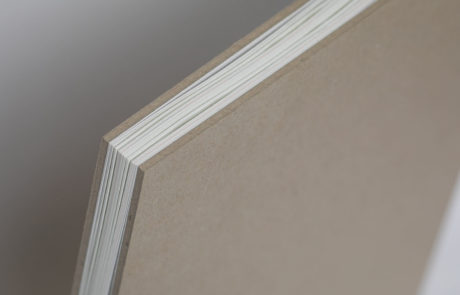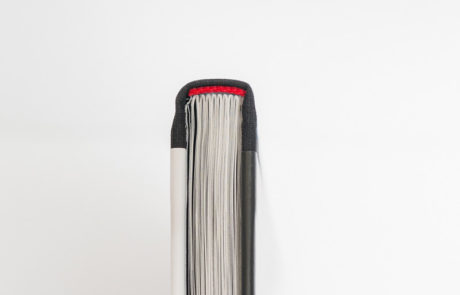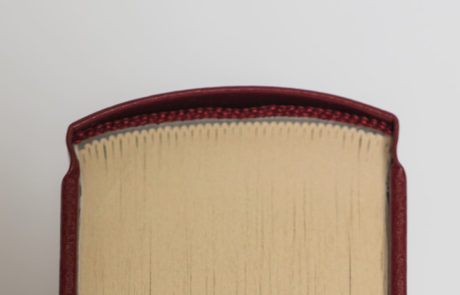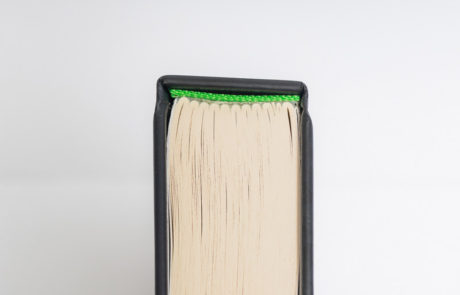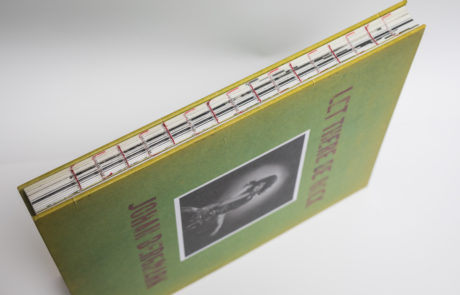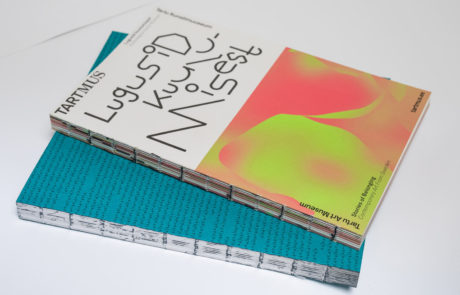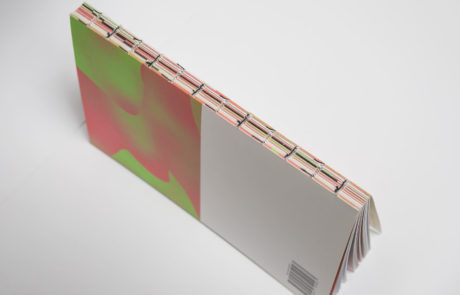Types of binding
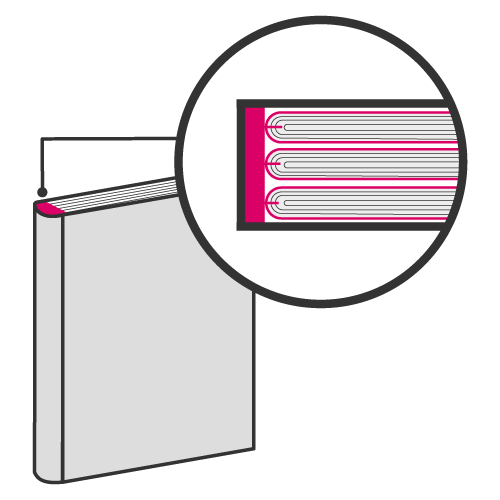
Sewn glued binding
This option is more durable, sturdier and easier to use than regular glued binding. The text block is sewn together from individual sections, i.e. blocks, and the cover is made of card. Sewn glued binding is suitable for books, product catalogues and educational materials.
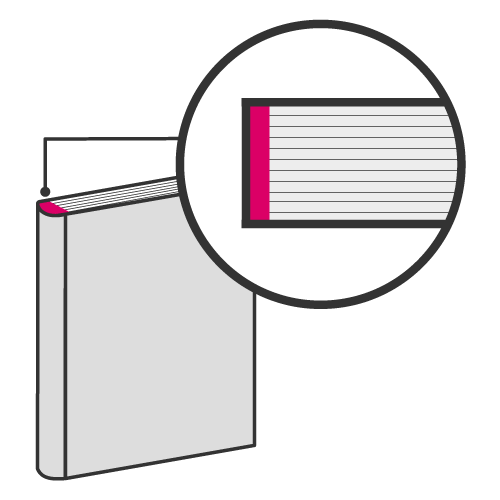
Glue binding
Glue binding is a cheap but high-quality and durable binding method. The sheets are fixed between the covers of the book with a thin layer of glue. Glue binding is suitable for paperbacks, magazines and advertisement materials.
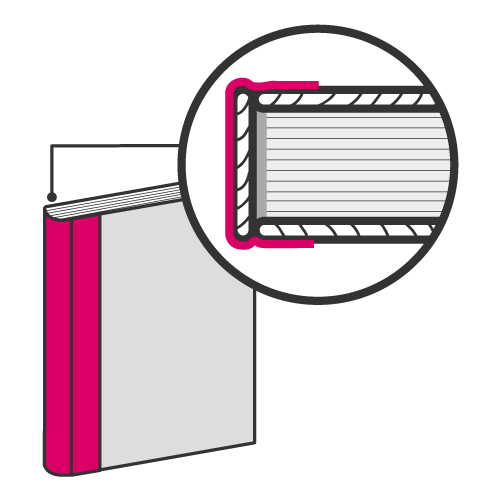
French binding
French binding is hard binding that uses a combination of two cover materials—the spine is covered with one and the front and back with another type of material.
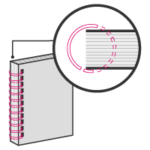
Wire binding
Wire binding is perfect for calendars, manuals and educational materials. The pages of the book are bound with round wire spine. A wire-bound book allows for 360-degree rotation of bound pages. Our selection features binding materials in different sizes and colours.
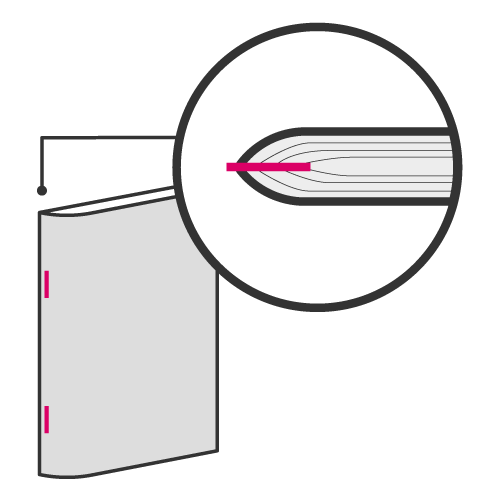
Saddle-stitch binding
This is the cheapest binding method. The printed product is usually stapled together with two metal staples. This method is normally used for exercise books, booklets and thinner books. It is suitable for advertising materials and smaller poetry books.
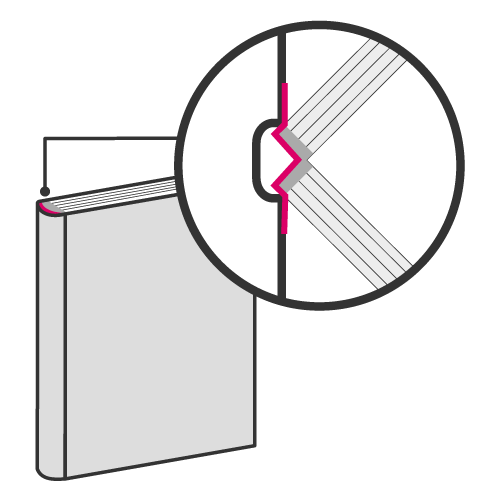
Otabind
Books bound with the otabind, i.e. layflat binding open fully flat. The space left between the spine and the cover helps to avoid the deformation of the book while reading, as all of the pages open fully flat.
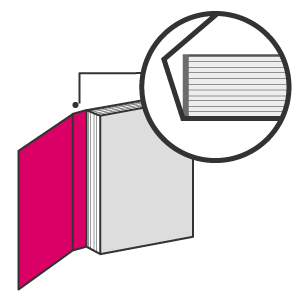
Swiss binding
Swiss binding can be used as an alternative for both hard- and softcover books. The text block of a Swiss-bound book is fastened to the back cover while the spine and the front remain open. The open spine of the book can be covered or left bare, adding contrast in the form of the stitches.
Covers & endpapers
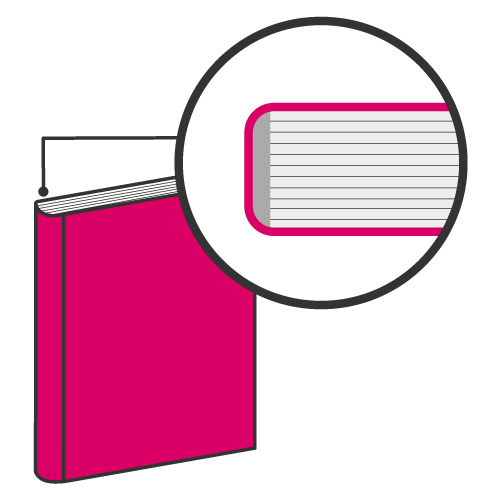
Softcovers
Softcover glue-bound books can have both sewn and unsewn text blocks. The covers of this type of book are usually one-sided (with colourful print outside and a blank inside cover) and made of card. Covers can be regular or with French flaps. Special effects can be added using post-treatment techniques such as laminating, spot varnishing or foil printing.
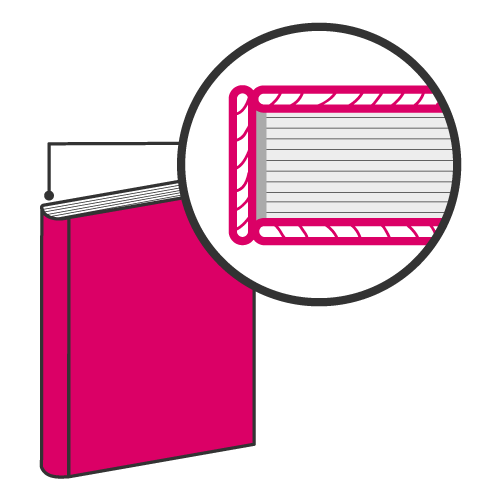
Hardcovers
The covers of hardcover books are made of binding board that is covered with either regular printed paper, laminated paper or a special cover material. In the case of classical binding, the covers are made of one and the same material. French binding, which is less common, uses two different cover materials—the spine is covered with one and the front and back cover with another type of material.
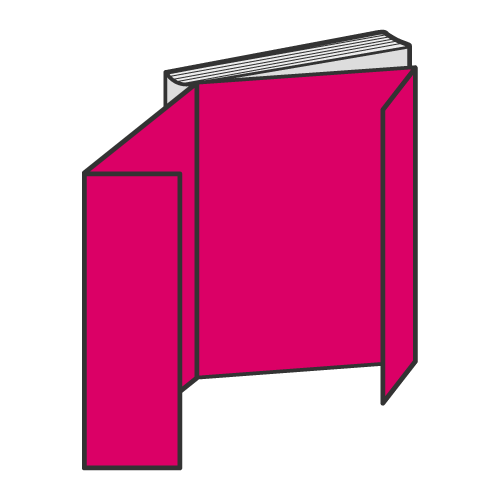
Dustjacket
The dustjacket protects books from wear and is fixed to the book with French flaps—the so-called cover extensions or design elements that can be used to display additional information and as a bookmark in the case of thinner books.
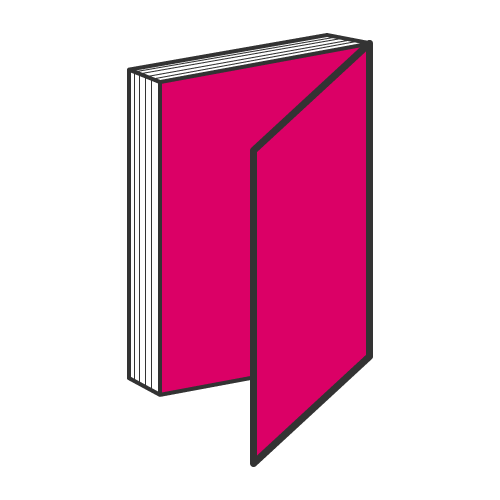
Front endpapers
The front endpapers of hardcover books keep the text block fixed to the cover. The pages glued to the front and back of the inside cover can be both of solid colour or feature an eye-catching pattern to add character to the design.
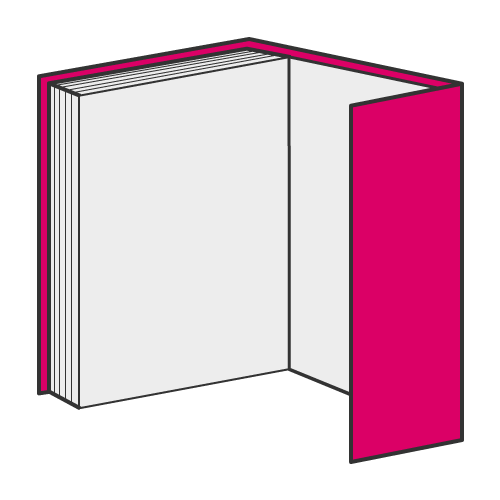
French flaps
French flaps are the extension of the front and/or back cover that are folded inwards and cannot be removed. The flaps can be used to display additional information about the author or the book, but they can also be used without text to reinforce the cover.
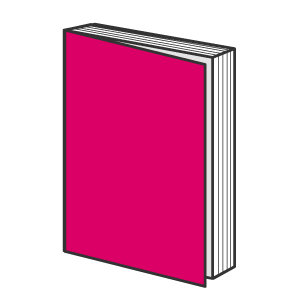
Raw cut
In the case of raw cut, the edges of the cover of a hardcover book are cut flush with the text block, which results in a striking, distinctive look.
Spine of a hardcover book
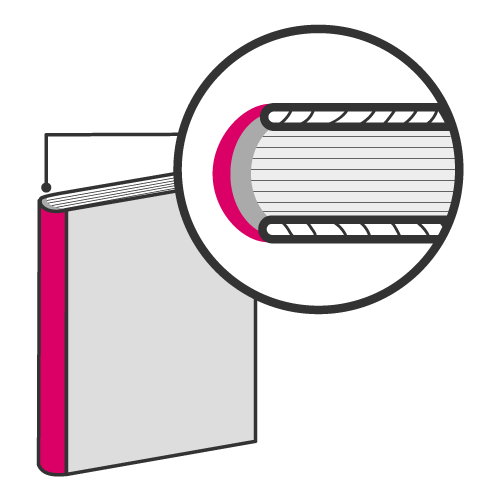
Rounded spine
In the case of rounded spine binding, the spine of the book is treated to achieve a rounded shape.
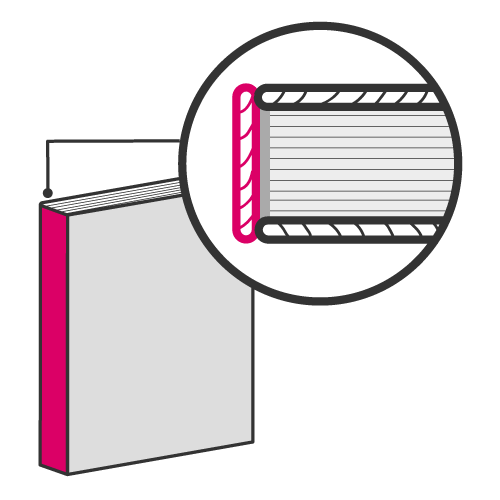
Flat spine
In the case of flat spine binding, the spine of the book is not treated, which results in a strong, flat spine.
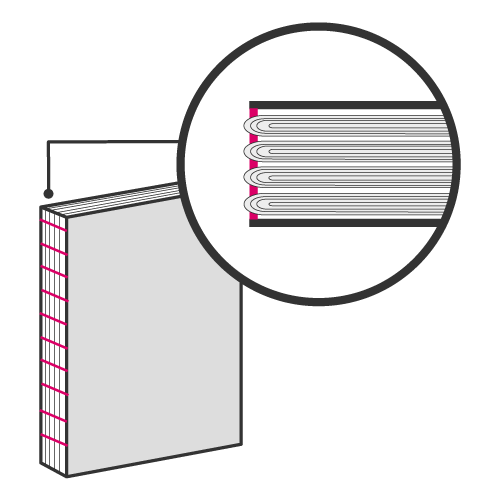
Open spine
In the case of open spine binding, the spine of the book is left uncovered with optional front and back cover. This is an eye-catching solution that also allows the book to be laid flat. This binding method often uses colourful stitches to decorate the open spine.

